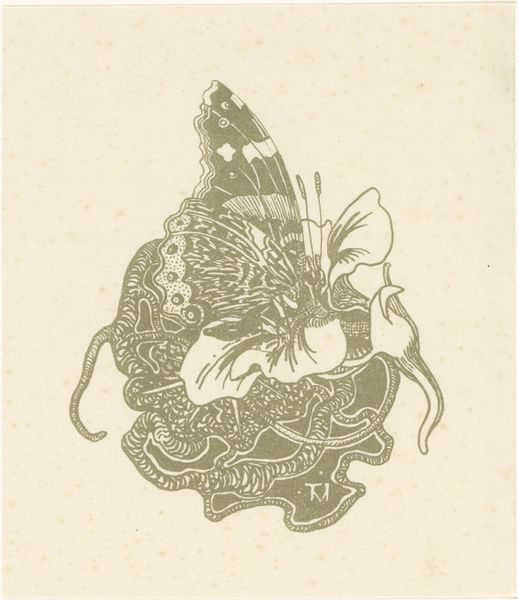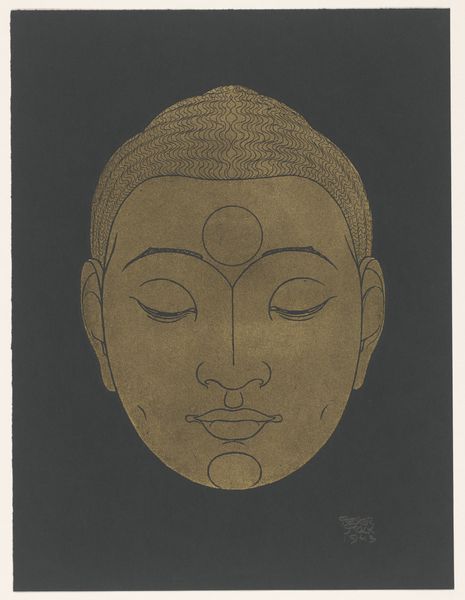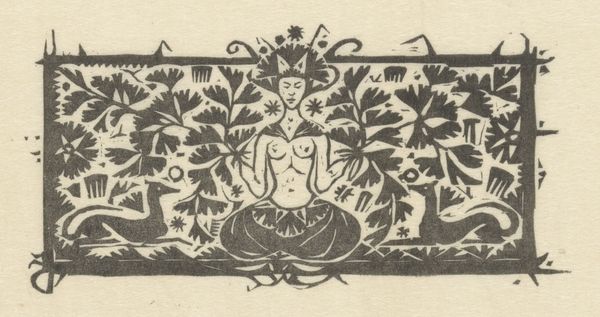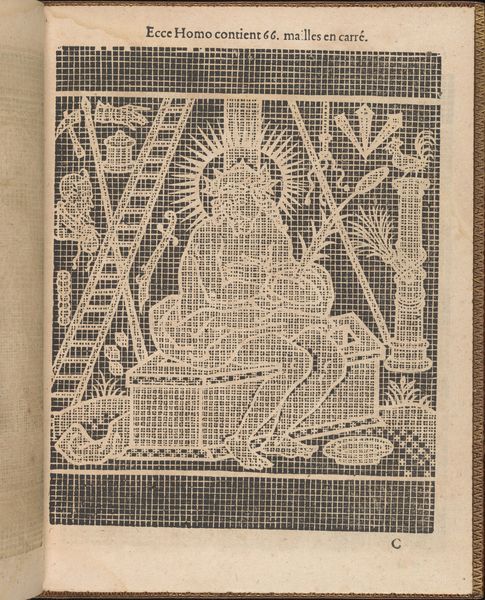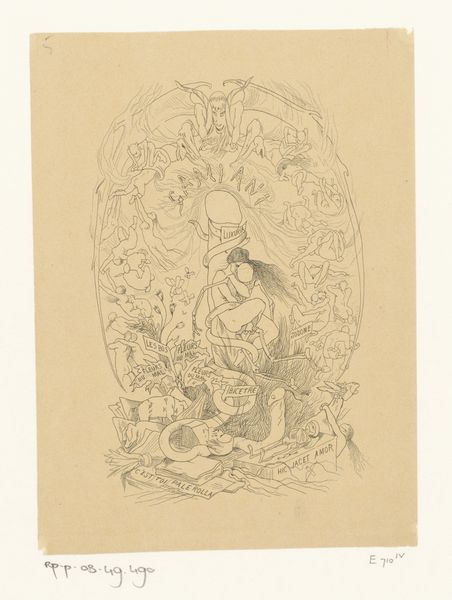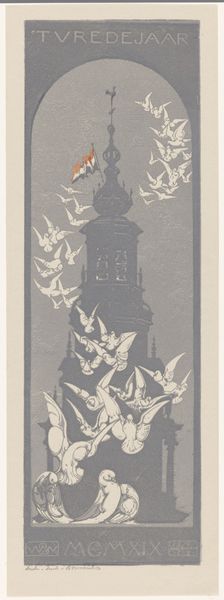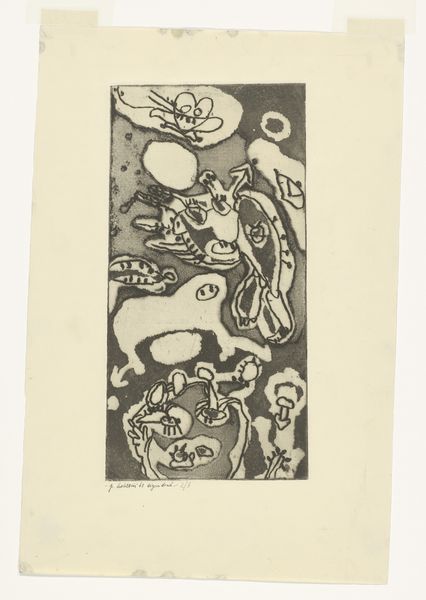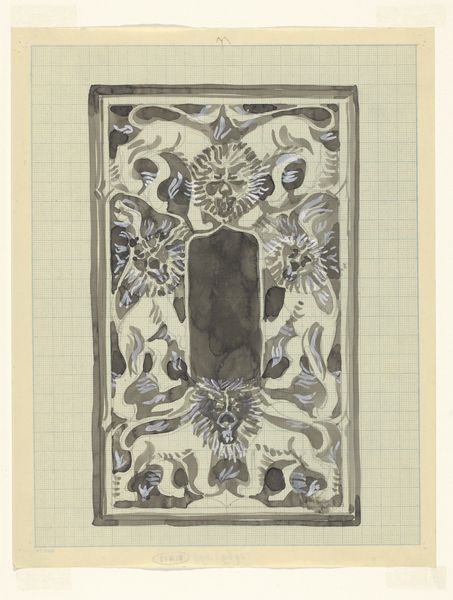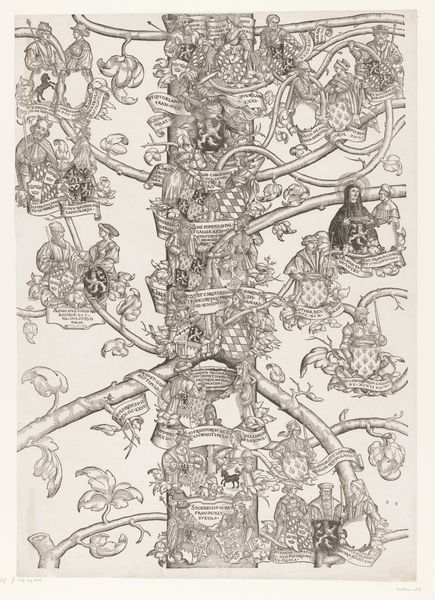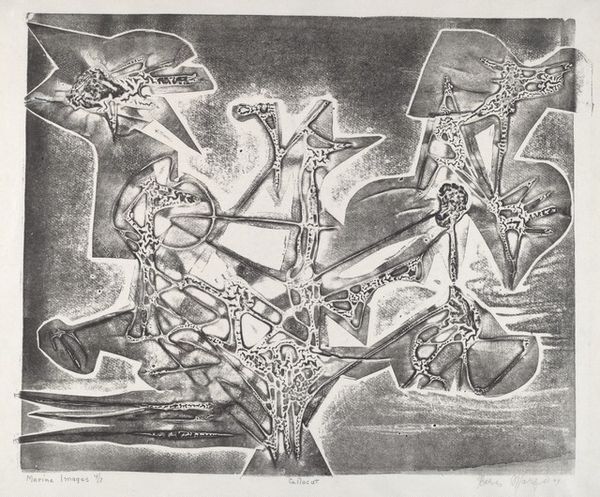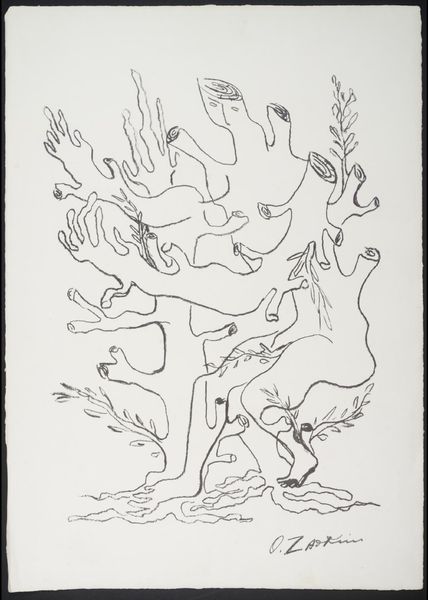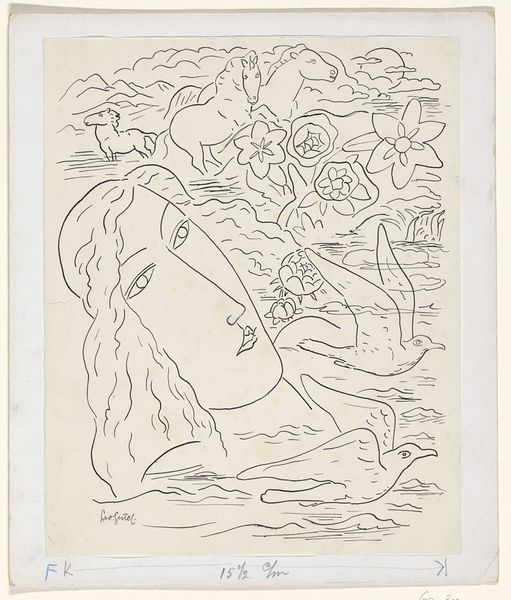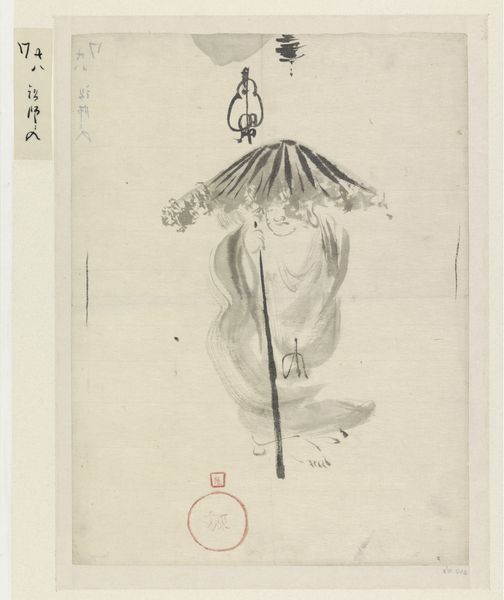
Dimensions: height 335 mm, width 215 mm
Copyright: Rijks Museum: Open Domain
Bernard Picart created this print of the Japanese god Quanwon, or more accurately, Kannon, with etching around the late 17th or early 18th century. Consider the context: Picart was a French engraver, part of a wave of European intellectuals attempting to understand and translate non-Western religious traditions. Here, Kannon, the bodhisattva of compassion, is depicted with multiple arms, each holding different symbolic objects – a visual metaphor for her ability to aid in many ways simultaneously. The lotus flower she sits upon signifies purity and enlightenment. But let's consider the politics of imagery. How might Picart's interpretation have been shaped by European perceptions of Asian religions during this period? Was it an attempt at faithful representation, or a projection of Western fantasies and colonial attitudes? To answer this, we can study travelogues, missionary accounts, and early ethnographic studies. The meaning of this print, like all art, is contingent on its historical and cultural context.
Comments
No comments
Be the first to comment and join the conversation on the ultimate creative platform.
